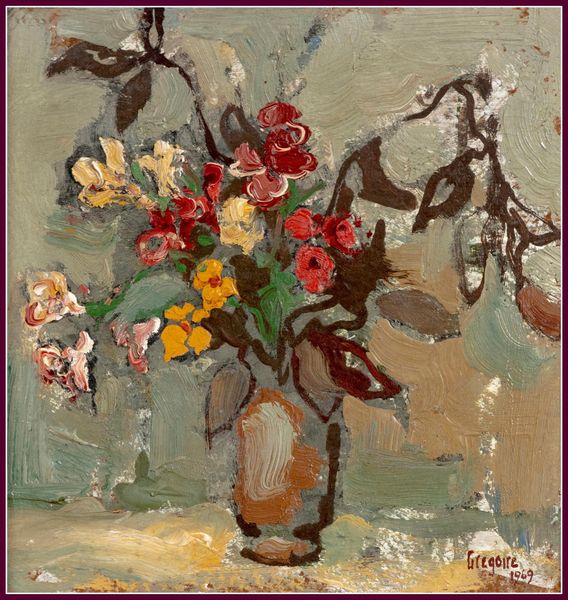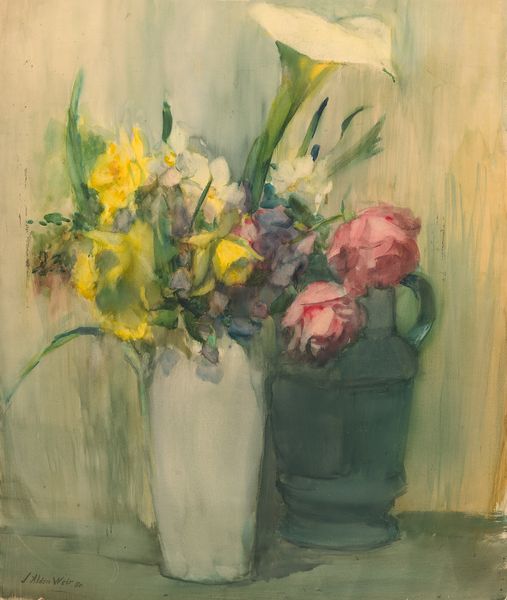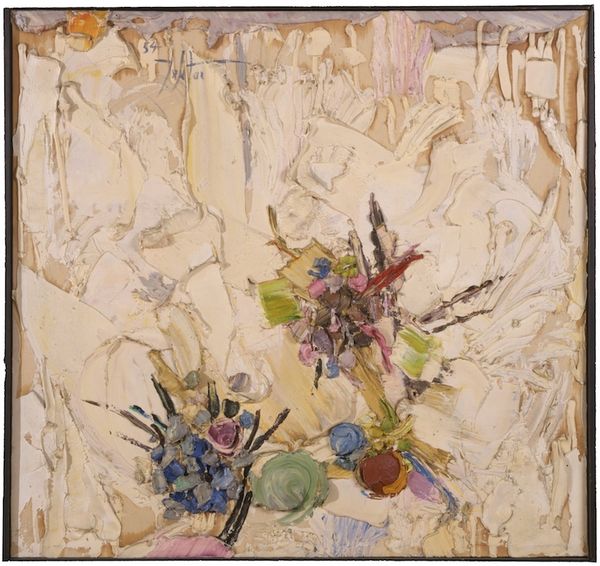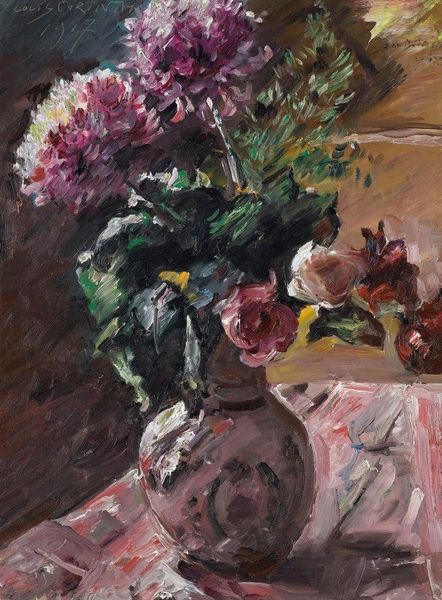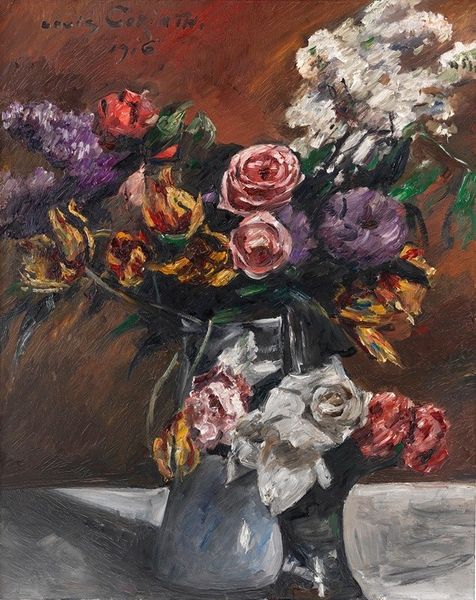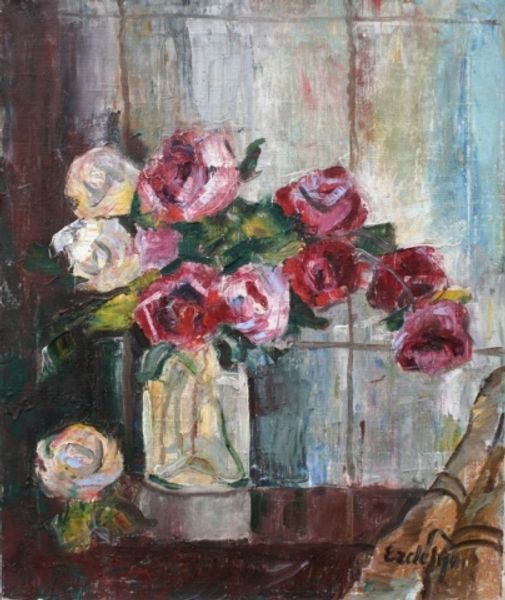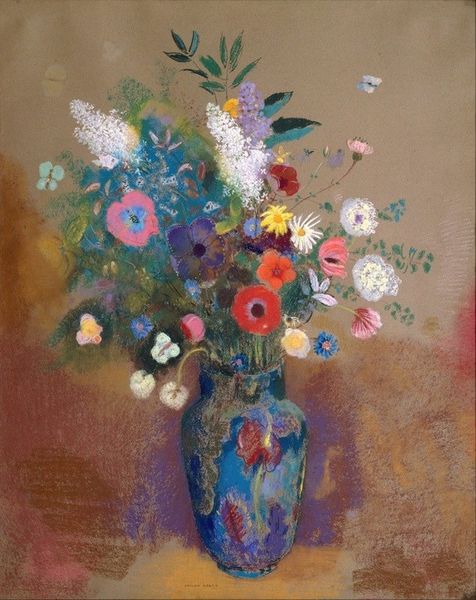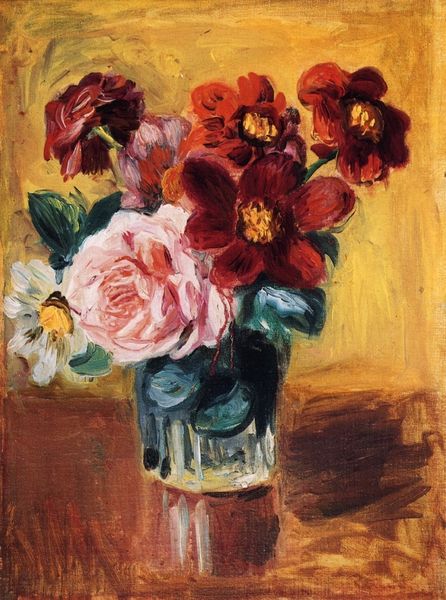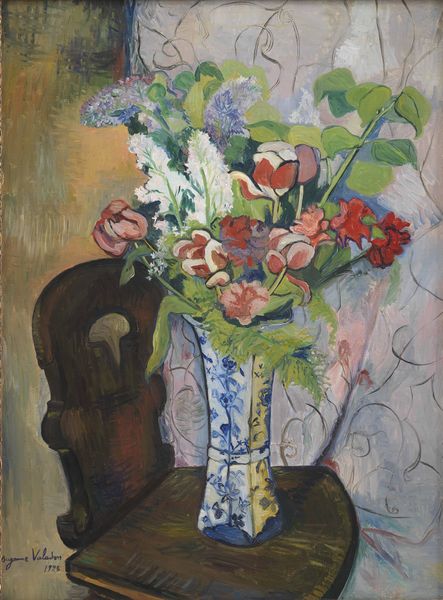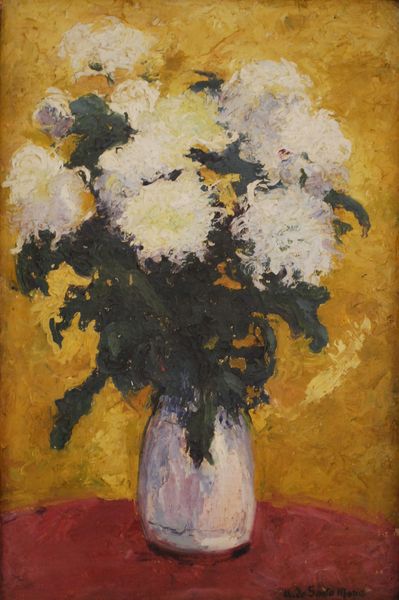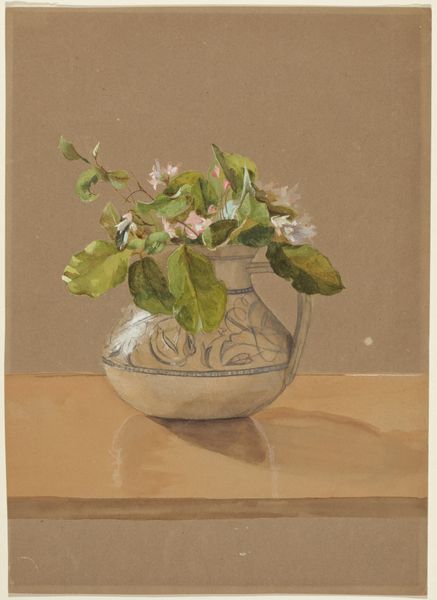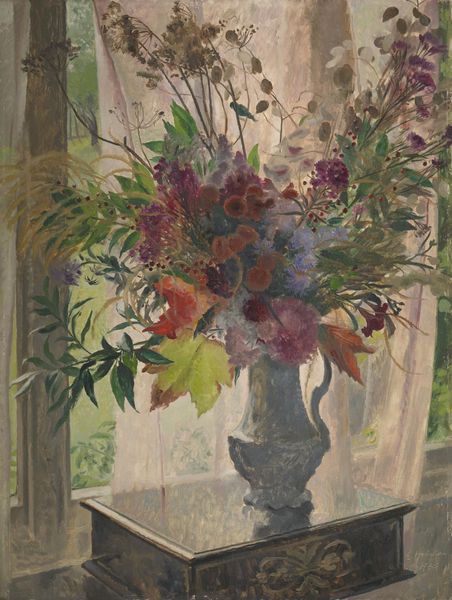
Dimensions: support: 749 x 584 mm
Copyright: © Gillian Carnegie | CC-BY-NC-ND 4.0 DEED, Photo: Tate
Curator: Here we have Gillian Carnegie’s “Thirteen,” a still life in oil, residing here at the Tate. Editor: It's… muted. The palette feels almost sepia, imparting a sense of faded memory or perhaps melancholy. Curator: Carnegie often subverts traditional genres. This challenges the conventional floral still life, doesn't it? The flowers appear past their prime. Editor: Exactly. Cut flowers often symbolize transience and mortality, but here, it’s amplified by the almost ghostly rendering. The thirteen blooms might be linked to superstitions surrounding bad luck. Curator: I'd argue Carnegie's choice of such a traditional subject allows her to comment on the role of painting itself. It reflects the cultural and societal perceptions of femininity historically linked to such imagery. Editor: I see that. It’s almost as if she's presenting us with a memento mori, a meditation on life and decay, coded in the symbols of a past aesthetic. Curator: Ultimately, the work offers a complex commentary on art history, tradition, and even societal expectation. Editor: Yes, leaving us to contemplate the enduring power of symbols and their inevitable shift in meaning.
Comments
Join the conversation
Join millions of artists and users on Artera today and experience the ultimate creative platform.
tate 6 months ago
⋮
Thirteen is one of a series of floral still life paintings. In each, Carnegie paints a bunch of flowers in a cut-down plastic bottle. Still life is a traditional genre of art alongside history and religious painting, portraiture and landscape. Carnegie explores the conventions of these genres. Although not concerned with narrative, she uses recognisable sources, with familiar meanings attached to them. This emphasises her interest in the nature of painting itself. She wants to draw viewers’ attention to the fact they are looking at a physical painting. Gallery label, December 2020

